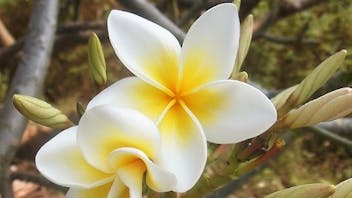Product Overview
Egyptian Jasmine is renowned for its exquisite bouquet, reinforcing Jasmine’s solid reputation as the King of Flowers. The aroma of our Jasmine Absolute from Egypt is intensely floral, sweet, tenacious, with a somewhat musky and tea/honey undertone; it is slightly lighter than our Jasmine Absolute from India, yet still very concentrated. It harmonizes well with almost all other essences and, due to its powerful aroma, is best diluted in a carrier oil or alcohol before blending with other oils. Only a hint of this precious oil is needed to impart elegance, balance, and smoothness to perfume creations.
Jasmine has been among the principal ingredients of more than 80% of all quality perfumes and a third of all men’s fragrances.[1] The sensual aroma is exhilarating and playful, and according to Patricia Davis, brings together the fiery dynamism associated with the masculine aspect (yang) and the soft earthiness of the feminine (yin).[3] The uninhibited aroma evokes lightness and joy, setting the stage for physical awareness and imagination. It is no wonder that the flowers, thought to awaken the spiritual nature of intimacy, have been used traditionally in some cultures to decorate the bed of newlyweds. In magical spiritual traditions, Jasmine is used as a devotional anointing oil and is worn for blessings and good luck.[4]
One look at the chemistry of this seductive aroma explains a lot about its sensual appeal. Amid a bouquet of complex flowery esters, including methyl anthranilate, is the highly coveted indole, a molecule found naturally occurring in certain plants and also human pheromones. At very low concentrations, indole smells intensely alluring and floral. Appearing in some of the sweetest blossoms such as Gardenia, Orange Blossom, Champaca, Tuberose, Neroli, Narcissus, Jonquil, and Honeysuckle, perfumers use indolic aromas to bring enticing, hypnotic, or animalic qualities to compositions. The aroma of Jasmine is said to blend with virtually everything and is an indispensable ingredient for the natural perfumer.
1 Groom, Nigel. The New Perfume Handbook, 2nd ed., 1997, pp. 168-9.
2 Davis, Patricia. Subtle Aromatherapy, 1991, p. 208.
3 Miller, Richard Alan and Iona Miller. The Magical and Ritual Use of Perfumes, 1990, p. 130.



